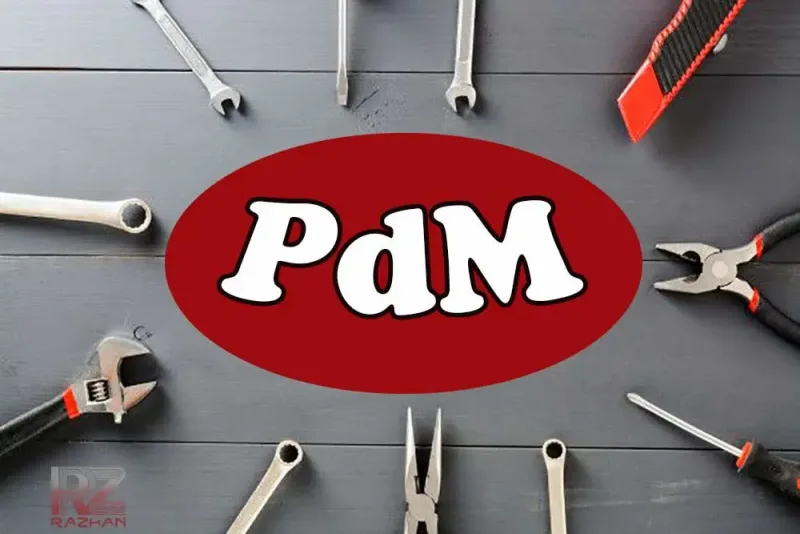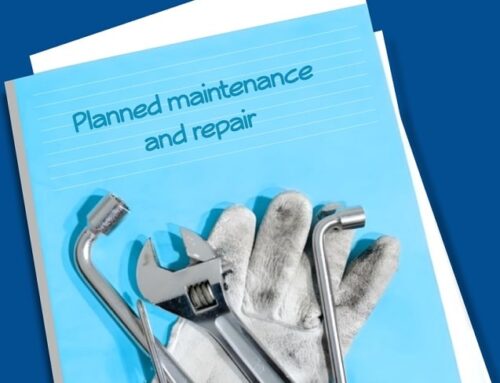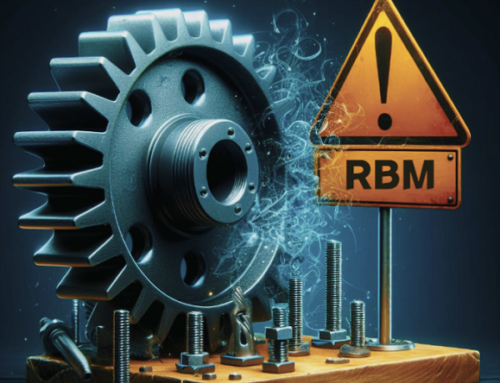Predictive maintenance and repairs (PDM)
Do you know the minimum amount of maintenance that should be performed to keep assets in optimal condition and prevent unexpected equipment breakdowns? This is a challenging question that can only be answered with the help of predictive maintenance and repairs.
The ability to predict the useful life of a unit or asset based on real-time data allows the organization to find an unprecedented way to manage and optimize its maintenance and repair resources.
To know whether predictive maintenance can be useful for your organization, you must first understand what it is, how it works, what are its advantages and disadvantages, and how to implement a predictive maintenance program.
If you are looking for a suitable resource that answers all these questions, stay with us until the end of this article.
-
What is predictive maintenance and repairs (PDM)?
PDM is a proactive maintenance strategy that uses condition monitoring tools to detect various signs of failure, anomalies, and equipment performance issues. Based on these measurements, the organization can use pre-built algorithms to estimate the failure time of a piece of equipment so that it can perform maintenance and repairs just before it occurs.
By knowing the failure time of a particular part, maintenance and repairs managers can schedule maintenance work only when it is really needed, simultaneously avoiding excessive maintenance operations and preventing unexpected equipment failure.
When this strategy is successfully implemented, predictive maintenance reduces operating costs, minimizes downtime issues, and improves overall asset health and performance.
-
How does predictive maintenance and repairs work?
The main advantage of predictive maintenance is that it can schedule work based on the current state of the asset. Understanding the exact status of complex assets is difficult but doable.
There are three main components that allow PDM to track asset status and alert technicians to future equipment failures:
- Installed condition monitoring sensors immediately report performance data and health status of the device.
- Internet of Things technology using cloud technology (CLOUD) helps to collect and analyze a huge amount of data.
- Predictive data models with the help of data processed with business intelligence (BI) tools can predict many failures.
It is better to take a closer look at all the main elements mentioned above to get a clearer picture of how predictive maintenance and repairs works.
1) CM technology and PDM techniques:
There are various types of condition monitoring sensors and equipment that can be installed to measure electrical currents, vibrations, temperature, pressure, oil, noise, corrosion levels, and more.
The sensors you work with depend on the type of assets in PDM and what you want to track.
Another benefit of using condition monitoring sensors is that you can have an accurate view of what is happening inside the asset without any disruption to productivity. In other words, it is not necessary to stop and isolate the asset to conduct physical inspections.
Depending on the sensors you use and the tests you want to run, there are different types of condition monitoring techniques that can be used:
2) The role of Internet of Things (IOT) technology:
Collecting data is one thing, but analyzing and using the data for the intended purpose is another. The previously mentioned sensors can collect and share data with the help of Internet of Things (IOT) technology. PDM relies heavily on these sensors to connect assets to a central system that stores input data. These central hubs are implemented using WLAN or LAN connection or cloud technology.
In this way, assets can communicate, work together, analyze data, alert corrective actions or take direct action.
3) Using predictive algorithms:
The most important part of predictive maintenance (and arguably the hardest) is creating predictive algorithms. Basically, you need to build a model that takes into account the various variables and how they interact and influence each other (with the ultimate goal of being able to predict equipment failure).
The more variables you use, the more accurate your models will be. This is why building predictive models is an iterative process. Initial models should be based on asset history stored in the CMMS, personal observations, FMEA analysis, existing internal sensors such as accelerometers and current meters, and similar sources. You may even need to first install condition monitoring sensors and run them to collect baseline data and complete initial predictive models.
Over time, the installed sensors generate more data that can be used to improve the initial models and fully predict the failure.
Algorithms follow a set of predetermined rules that compare an asset’s current behavior with its expected behavior. Deviations indicate gradual deterioration that leads to asset failure. Algorithms predict failure points based on deviations, current operating conditions, past failure data, and other variables in the data model.
The end result of an automated system is that:
-
Combine predictive maintenance with CMMS software
CMMS provides basic data for PDM implementation:
Information collected over time about asset performance helps form a starting point and gather initial data before implementing PDM. Although there are other sources such as hard copy preservation records, maintenance and repair software provides the most comprehensive and easiest source of historical information.
CMMS integrates with predictive maintenance technology to automate operations:
Maintenance software can automatically generate an alert or action whenever sensors detect that an asset is operating outside of predetermined parameters. These alerts prompt the maintenance team to take preventive measures before the device breaks down and causes a major breakdown.
These automated commands may be for a routine maintenance task or corrective task. Common examples of warnings and work orders are:
In essence, although predictive maintenance and repairs produces very accurate data, if not combined with a CMMS, this information is limited to the ease of implementing maintenance routines. On the other hand, CMMS alone cannot measure or predict machine health.
By combining both technologies, users get a powerful solution that is essential for the modern maintenance management team. Predictive maintenance and repairs allows you to take some maintenance actions, and CMMS helps you manage your resources and put those tasks into your maintenance schedule.
Maintenance software facilitates data interpretation:
Although PDM tools provide valuable insight into the condition of the asset through vibration, lubrication, heat, oil analysis, etc., the data generated is huge and would be cumbersome for humans to manage manually.
With the right CMMS, users can easily understand an overview of the data generated.
CMMS acts as a central organizational tool:
The maintenance and repair software collects various information about the assets and presents them in a centralized platform in the form of reporting modules.
For example, PDM provides raw equipment data, but CMMS provides additional information from other modules such as asset history, inventory, spare parts management, labor management, maintenance schedule, and more.
As a result, it helps maintenance departments to make informed decisions.
-
Preventive or Predictive Maintenance and repairs: Which is Right for You?
The main difference between preventive maintenance and repairs and predictive maintenance and repairs is in setting the maintenance calendar. While predictive maintenance uses condition monitoring sensors and predictive algorithms to guide maintenance schedules, preventive maintenance and repairs calendars are based on equipment usage and time intervals.
While this difference is not significant in terms of appearance, there are significant differences in terms of operation. This difference changes how inventory is managed, how scheduled downtime is managed, and has an overall impact on how maintenance tasks are managed.
On paper, predictive maintenance is clearly the better strategy. However, implementing condition monitoring technology and developing predictive models can be challenging and expensive. Therefore, it is not cost-effective to put all your assets into a PDM program.
This is where preventive services come into play. Critical assets that do not qualify for the PDM program can be included in the preventive maintenance program.
The combination of preventive and predictive maintenance and repairs is necessary for the correct implementation of maintenance and repair operations.
-
Conclusion
Predictive maintenance and repairs is a strategy that has major benefits, but is certainly not the easiest to implement. PDM can be a good option for heavy industries that have expensive assets and their maintenance is necessary, but it is not economically viable for normal industries and using preventive maintenance and repairs is a better option. These industries can also be used selectively for some equipment because it is a great long-term solution that can provide significant ROI through cost savings and improved device performance.
If you don’t know what strategy to use for your business, contact us for a free consultation.









